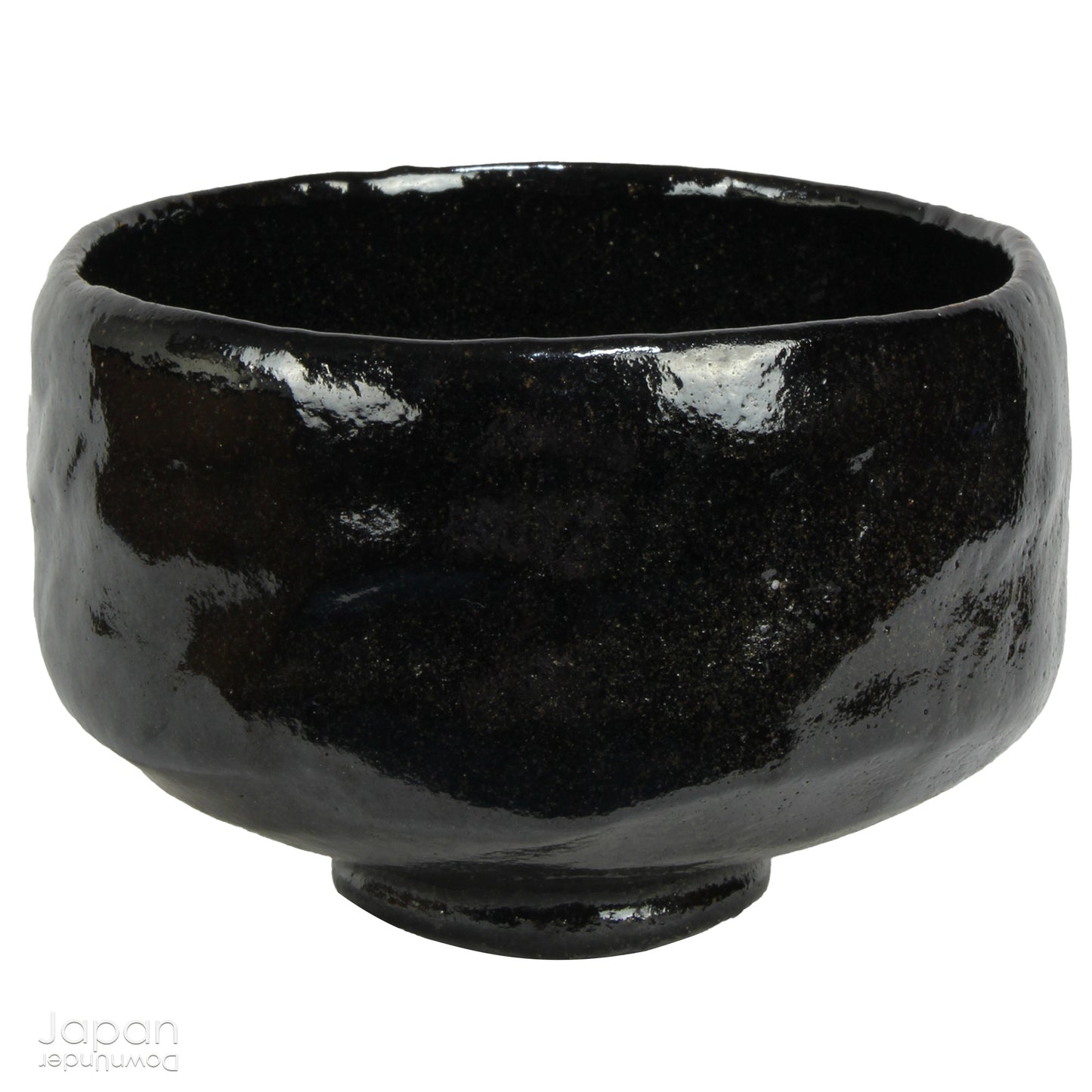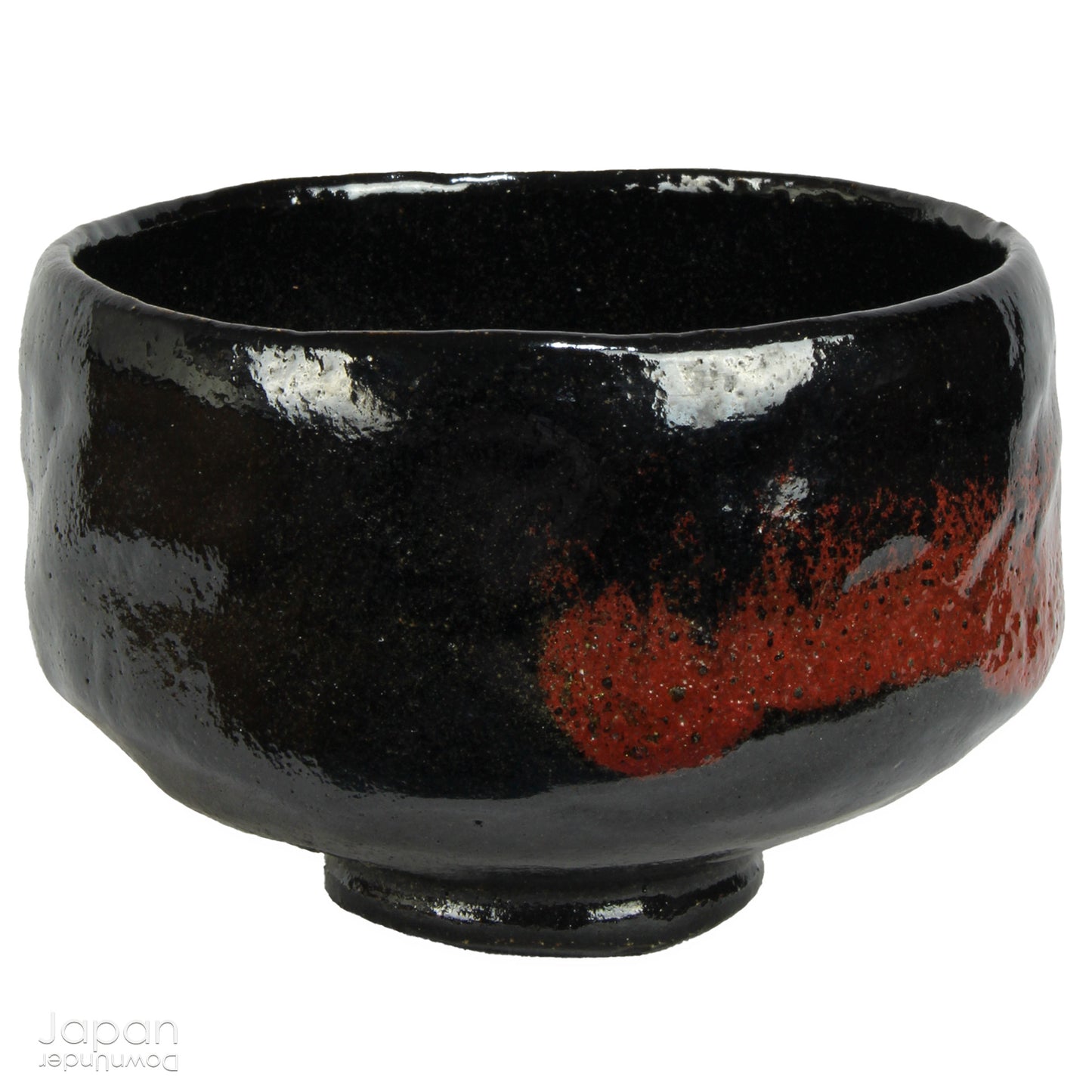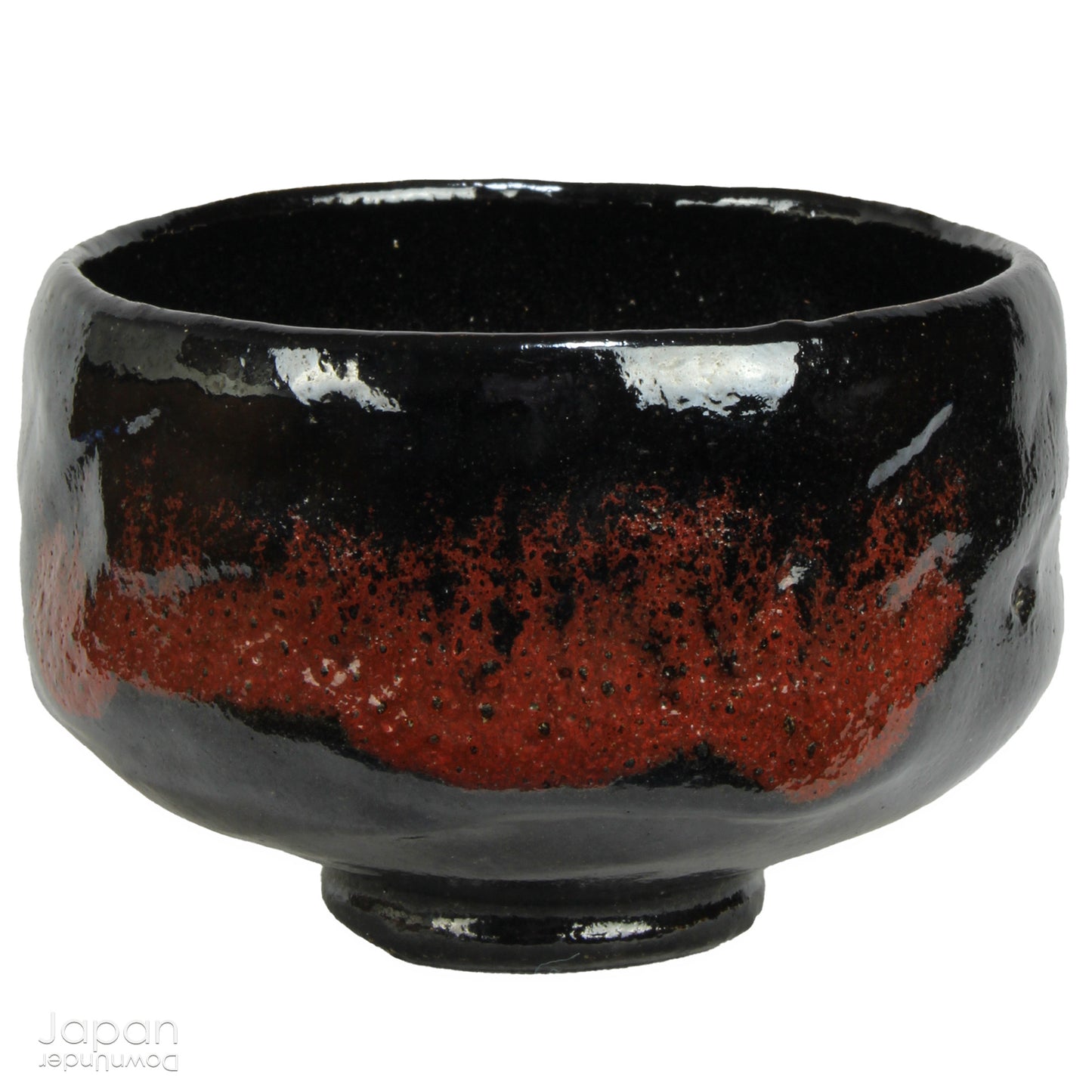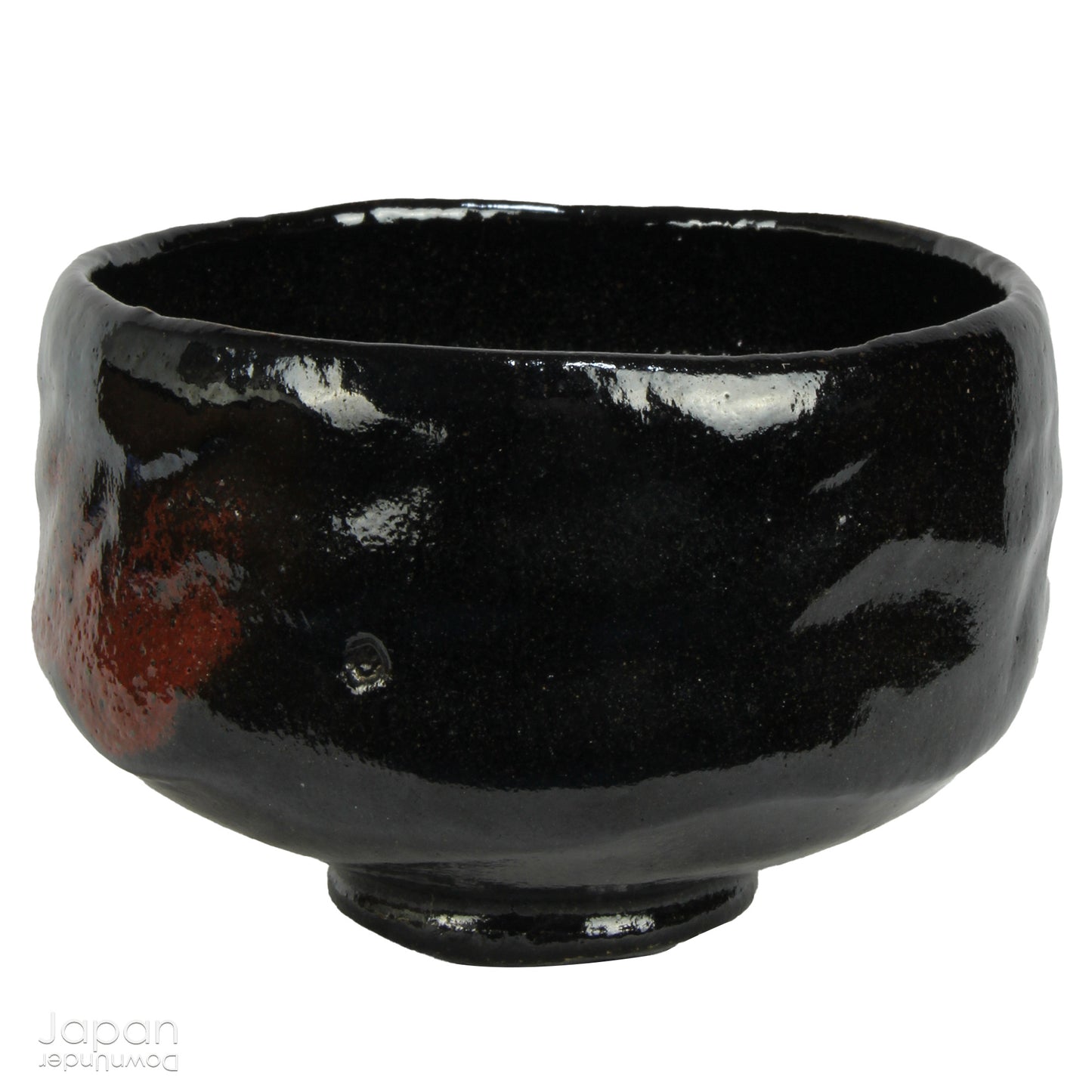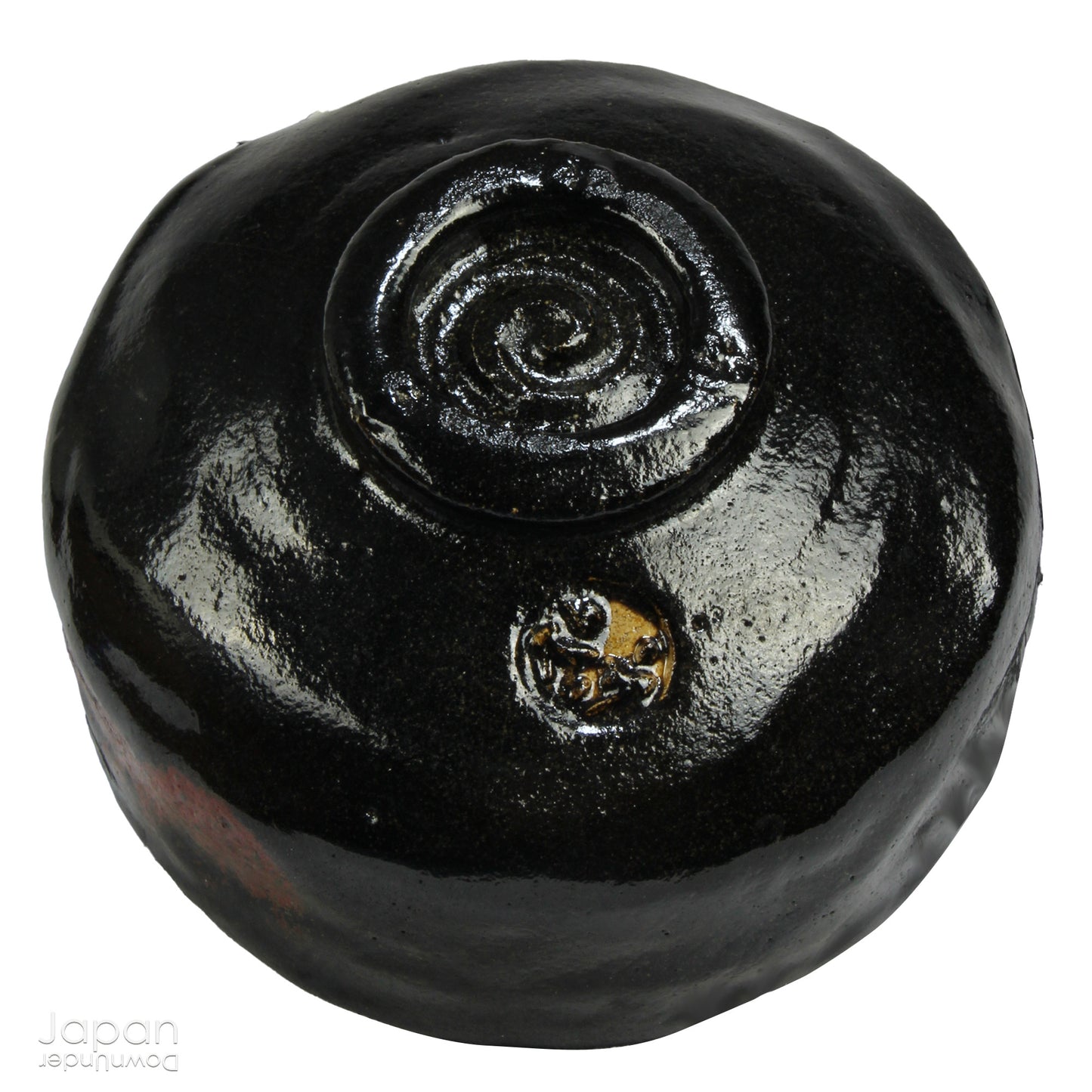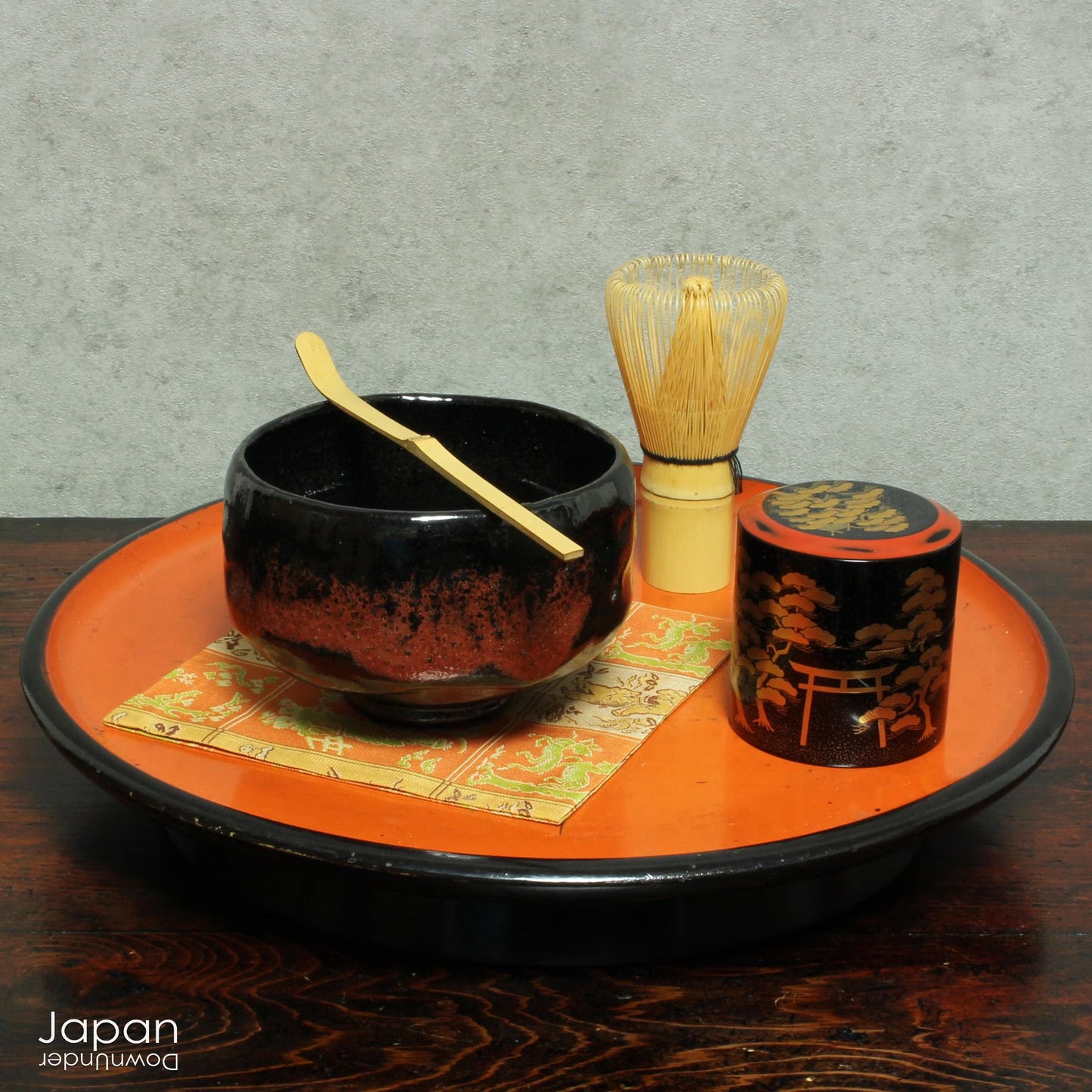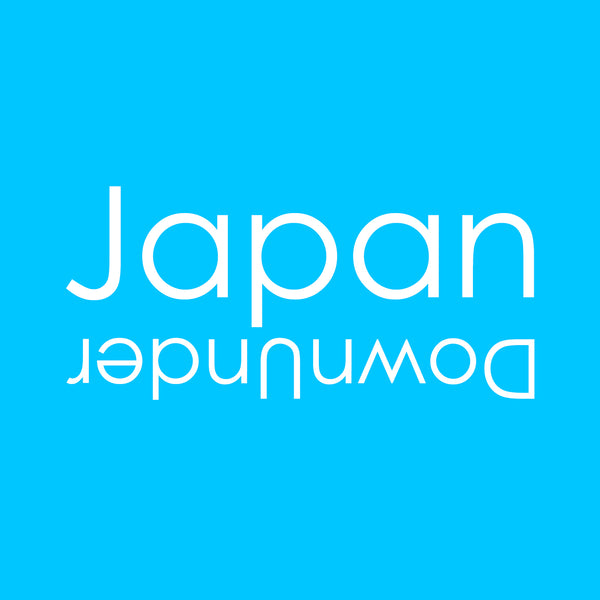JapanDownUnder
handcrafted black raku matcha tea bowl with unique red accents
handcrafted black raku matcha tea bowl with unique red accents
Couldn't load pickup availability
Love Japanese Style Like We Do
Elevate your tea experience with this stunning vintage black raku ware matcha tea bowl, a timeless work of art that brings both beauty and sophistication to every sip. Handcrafted in Kyoto, Japan, this elegant bowl features a striking contrast between the glossy black glaze and subtle reddish-brown accents that emerge randomly across the surface - each one a testament to the artistry and uniqueness of the raku firing process.
Crafted from lightweight, porous clay, the bowl's design is as functional as it is beautiful. The slightly indented ridges just below the lip allow for a comfortable and secure cupping of the bowl, perfect for the ceremonial enjoyment of matcha. Its smooth tactile feel adds an extra layer of refinement to your tea ritual, making each moment feel special.
Marked with the artist's signature seal, Sasaki Shoraku, on the base, this bowl comes with its original wooden storage box. The artist’s seal is also featured on the lid of the box, further emphasizing the authenticity and craftsmanship of this unique piece. In very good vintage condition, this bowl shows no cracks or chips, maintaining its charm and character through the years.
In the world of Japanese tea, a tea bowl is said to gain beauty with use. Over time, the oils from your hands and the rich green of the matcha will gradually enrich the bowl's surface, giving it a deeper luster and warmth. Some tea masters even say that a humble, well-loved bowl becomes more beautiful than an expensive one left unused - a perfect reflection of the true spirit of tea.
Much like the people who use it, a chawan has its own character and soul. It carries the spirit of its maker and the stories of those who have held it, making each cup of tea an intimate, meditative experience.
- tea bowl measures 8.5 cm (3.3”) tall x 12 cm (4.7”) in diameter.
- total weight 850 gm.
(listing for boxed tea bowl)
SHIPPING INFORMATION
- please read our shipping notes in shipping policy.
- we use recycle packaging and wrap for safety, rather than appearance.
ABOUT OUR VINTAGE, ANTIQUE AND OTHER ITEMS
We list pieces we feel are worthy of display. There may be scratches, dents, fading and signs of wear and tear. We try to explain the condition of each item exactly, but may miss something.
Information regarding the item and it’s age is obtained from dealers and our personal research. We do our best to give you the correct information but please be aware that we cannot guarantee this information.
Please message us prior to purchase with any questions you may have about our products.
CHAWAN
The chawan is a bowl used for preparing and drinking tea, and originated in China. The earliest chawan in Japan were imported from China between the 13th and the 16th centuries. Until the 15th century in Japan, tea was drunk mainly from a variety of Chinese tea bowls which the Japanese called ‘Tenmoku Chawan.’ This type of Chinese chawan was the preferred tea bowl for the Japanese tea ceremony until the 16th century. The Japanese term ‘tenmoku’ is derived from the name of the Tianmu Mountain, where Japanese priests visited Chinese temples and acquired these tea bowls to bring back to Japan.
By the end of the Kamakura period (1185–1333), as the custom of tea drinking spread throughout Japan and the Tenmoku chawan became desired by all ranks of society, the Japanese began to make their own copies in Seto (Aichi Prefecture). The Japanese particularly liked the bowls with a tapered shape, so most Seto-made Tenmoku chawan had this shape.
With the rise of the wabi tea ceremony in the late Muromachi period (1336–1573), the Ido chawan, kinds of Korean bowls mainly used for rice, also became highly prized in Japan. Korean bowls were a favourite of tea master Sen no Rikyū because of their rough simplicity.
Over time and with the development of the Japanese tea ceremony as a distinct form, local ceramics became more highly prized and developed. Around the Edo period, the chawan was mostly made in Japan.
The connection between ceramics and tea-drinking has a rich, culture. The qualities of handmade ceramic vessels have much in common with the virtues revered by the Japanese tea ceremony. Developing into a true art form, the ceramics and the simple act of tea drinking became symbolic in Japan of an appreciation of nature, simplicity and imperfection, and later as a higher art, advocating harmony and balance.
Tea bowls are never perfectly round, for they must fit the hands comfortably. A chawan is somewhat like a person. It has its own character and given time its own stories to tell. The bowl’s spirit comes from its maker and the people who have held it and enjoyed drinking tea from it.
Tea bowls are never perfectly round, for they must fit the hands comfortably. A chawan is somewhat like a person. It has its own character and given time its own stories to tell. The bowl’s spirit comes from its maker and the people who have held it and enjoyed drinking tea from it.
RAKU WARE / RAKUYAKI
Rakuyaki is a type of Japanese pottery made in Kyoto. It is traditionally used in Japanese tea ceremonies, most often for chawan tea bowls. It is hand-shaped rather than thrown. The pottery is fairly light and porous due to the low firing temperatures. Lead glazes are used and the pieces are removed from the kiln while still glowing hot. In the traditional Japanese style, the fired raku piece is removed from the hot kiln and allowed to cool in the open air.
Share

